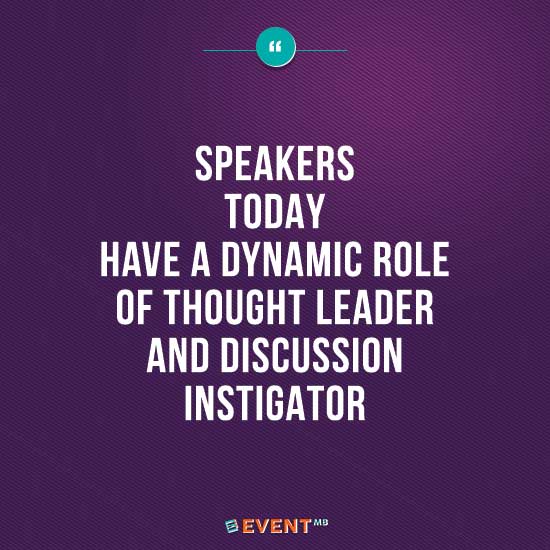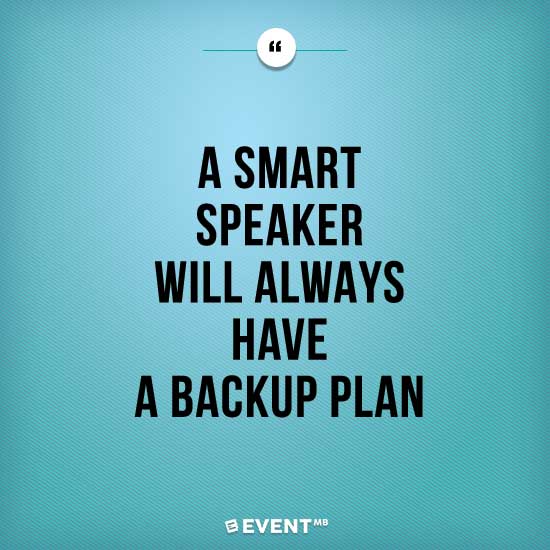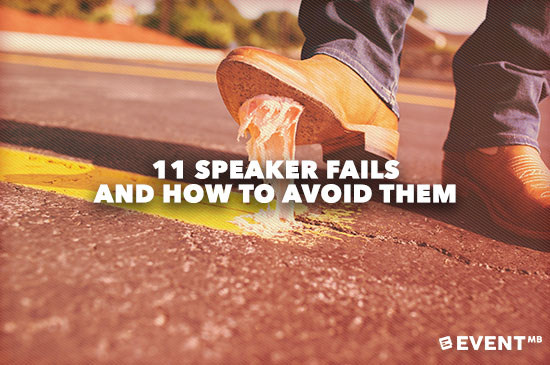Skift Take
Social media, the Internet, and video have changed how a speaker engages with the audience. Your presentation is as much shaped by the them as it is your content. If you long to be a successful speaker, you need to avoid these common fails.
While opportunities for speakers are on the rise, with the increase in webinars, podcasts, and other media that don’t require a stage, the demands on speakers are greater than ever. The requirements have switched from a one-way content presenter to a much more dynamic role of thought leader and discussion instigator. If you aren’t connecting with your audience, you’re failing them. Here are a few other common fails you want to avoid.

Misreading Interest
James Brady, White House Press Secretary under Ronald Reagan, once said never worry if as a presenter you see people looking at their watches. It’s when they start shaking their watches because they think they’re broken, that you need to wrap it up. Today, you won’t get that subtle message. They’ll simply pull out their phones and ignore you.
Yes, your presentation must last a certain amount of time based on your contract but you need to engage every minute through encouraging audience participation, using social media, or any other way that keeps people interested.
Not Recognizing Interest
Old school speakers will tell you they look for eye contact and gauge audience interest that way. Today, your most engaged audience is tweeting out your content at a frantic pace. The speaker only sees the tops of heads. If you’re looking for eyes as an indication of interest, you’re missing what interest looks like.
Not Being Involved in Conversation on Social Media
If you’re speaking at an event and you think your only obligation is to show up on time and remember what you’re talking about, you’re missing an opportunity to become someone’s favorite speaker. What will set you apart as an event speaker is participating in the hallway discussions and conversations on social media before and after your session. Conversations don’t end with applause for you. You should be there for at least part of the conversation. By doing so before you can help cultivate a crowd of interest and drive attendance. If you stay in touch afterwards, you can solidify that interest. This engagement may get you hired back for a repeat performance.
Ad Libbing Too Much
Professional speakers who become too familiar with their presentations and decide to spice it up, or those who refuse to follow the directions given by the event planner, can find themselves in trouble quickly. While playing off your audience keeps each presentation fresh, be careful not to go too far off of script. Don’t let your overconfidence, emotions, or forgetting your glasses at home to allow you to slip up during a critical moment. These things happen but they are incredibly uncomfortable when they do.
Thinking Your Audience is Sitting in Front of You
Yes, your audience is comprised of people you are currently sharing a room with as you speak, but if you don’t understand the ripple effects of what is shared on social media you’re missing an opportunity for greatness. Don’t be the kind of speaker that asks people to silence their cell phone before your presentation. Instead hope that you are so inspiring and they’re so busy sharing that no rings are heard. Create tweetable quotes in your media presentations (yes, many people like to be spoon fed) and reward your top tweeters as you go. This will encourage others to join in the sharing as well.
Using Shop Talk and Marketing Speak
Know your audience and how they speak. Don’t let your industry background color your word choice to include words that are hollow to most of the world. Words like “synergy” should be avoided. Those words might appeal to the percentage of the C-Suite who are still quoting management books from the ‘80s, but the rest of the people expect a lot more human language. Whatever you do, don’t use words and phrases just because they’re popular right now, unless you’re presenting at a teen award show. Check this speaking fail out.
Not Knowing How to Use the Technology

As a speaker you need to use technology. Some events will accommodate you and take care of the details but unless you want to look incompetent, you should know the basics. A lot of speakers are even bringing their own interactive technology to their presentations and running polls and other engagement tools. However, a smart speaker will always have a backup plan even if it turns into a comical marker on poster board sketch. Sadly, for executive Steven Sinofsky there is no backup plan when your presentation is about the technology itself (but there’s always another device).
Refusing to Answer Questions
Many speakers do the circuit, and unless they have a new book to sell, their presentations can be largely the same even when they’re presenting in different venues. A good presentation is different in every venue because the audience is different. Just as an author cites a reader as a co-creator of his/her novel, a presenter can have a very different experience based on audience interaction. That’s why you need to leave time for a discussion. It’s best not to place it at the end when people feel rushed. Be familiar enough with your content that you let audience interest dictate what you discuss. Unless, of course, you’re a professional athlete.
Not Knowing Your Audience
Who are you talking to? What are their needs and concerns? Is there special language you need to use or avoid when giving a presentation to them? While some audiences are willing to extrapolate the details of your message and apply it to themselves, many are not. Each presentation should be personalized to the group in front of you. Association executives have very different concerns than corporate executives, as Brian Solis learned when he spoke about his book End of Business as Usual at an association meeting and referred over and over to “customers” (which associations don’t have). An otherwise effective presentation rankled some of the audience because they didn’t feel it applied to them.
Reading Word-for-Word Off Notes or PowerPoint Slides
Just don’t. If you don’t know the topic well enough to discuss it without reading, you’re probably not the best person to lead the discussion.
Not Telling Your Story
The audience may assume you’ve been vetted by the event organizer as to your knowledge level on the subject, but deference to intelligence doesn’t usually form interest in the person. In order to connect with your audience, you need to tell you story. Telling your story should involve aspects the audience can identify with, challenges you’ve overcome, weaknesses you faced, and how you were able to do so. The sole reason you tell your story is to establish a bond between you and the listeners. While this should be only a small part of your presentation, don’t rush through it. Leave some time for the dramatic pause. Look how Marcus Sheridan talks about marketing in a very human way here.
In Conclusion
Speakers are no longer challenged with just presenting great materials. Event planners are no longer hiring speakers for 1.5 hour increments. Successful speakers are becoming more a part of the event and interacting with the audience personally and virtually. Your personal brand exceeds your knowledge on the session topic and how you engage and drive participation is critical to your success.





